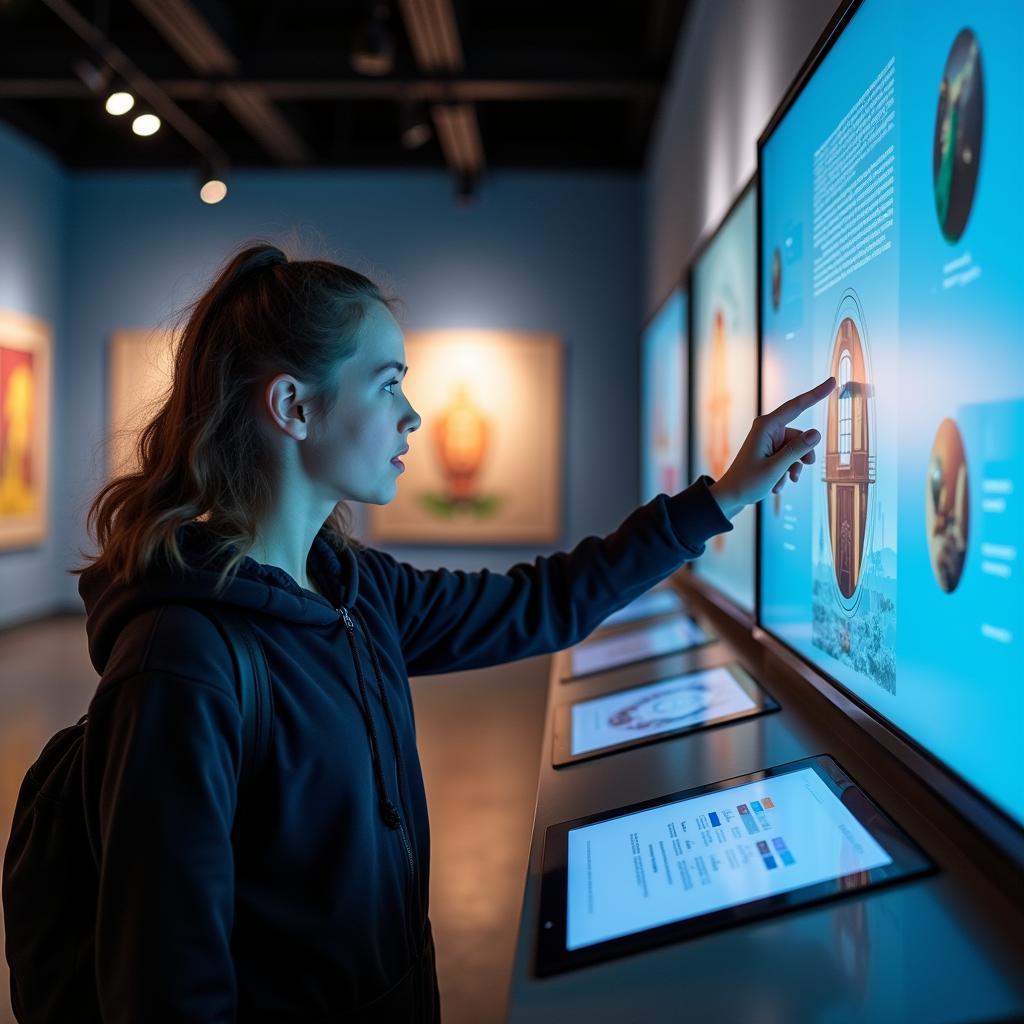Museums are common topics in IELTS Speaking tests, particularly in Part 2 and Part 3. Understanding how to effectively describe museums can significantly boost your speaking score. Similar to describe a place in your city known for its history, this topic requires detailed observation and cultural awareness.
Part 1: Introduction and Interview
Common questions examiners ask:
- Do you like visiting museums?
- What kind of museums have you visited?
- Are there any famous museums in your city?
Sample answer (Band 8-9):
“I’m absolutely fascinated by museums. They’re not just buildings with artifacts; they’re gateways to understanding our past and culture. I particularly appreciate interactive exhibitions where visitors can engage hands-on with the displays.”

Part 2: Cue Card
Describe a museum you would like to visit again
You should say:
- What kind of museum it is
- When you visited it
- What you saw there
- And explain why you want to visit it again
Sample Answer (Band 8-9):
“I’d love to tell you about the British Museum in London, which is remarkably similar to describe a building in your city you would like to visit again in terms of its historical significance.
The museum is a world-renowned institution housing countless historical treasures. I visited it during my trip to London last summer, and it was an absolutely mesmerizing experience. The moment I stepped through its magnificent columned entrance, I was transported into a world of historical wonders.
What particularly captivated me was the Egyptian section, featuring the iconic Rosetta Stone. The sheer magnitude of the collection is mind-boggling – from ancient mummies to intricate hieroglyphics. Just like describe a city known for its historical sites, every corner revealed something fascinating.
I’m eager to return because there’s simply too much to absorb in one visit. The museum is like describe an ideal place to spend a holiday for history enthusiasts. I’d particularly like to explore in depth the Asian galleries, which I only briefly glimpsed during my first visit.”
Sample Answer (Band 6-7):
“I want to talk about the British Museum in London. It’s a big museum with lots of historical things. I went there last summer during my vacation. I saw many interesting things like Egyptian mummies and old stones. The museum was very big and had many rooms. I want to go back because I couldn’t see everything in one day. Also, I really liked the building and the exhibits.”
Part 3: Discussion Questions
Q: How have museums changed in recent years?
Band 8-9 Response:
“Museums have undergone a dramatic transformation in recent decades. They’ve evolved from passive repositories to interactive learning spaces, much like describe a famous building you would like to see. Modern museums now incorporate cutting-edge technology like virtual reality and augmented reality to create immersive experiences. They’ve also become more inclusive and accessible, offering multilingual guides and facilities for differently-abled visitors.”
Key Vocabulary and Expressions
- Awe-inspiring /ɔː-ɪnˈspaɪ.rɪŋ/ (adj): extremely impressive
- Cultural heritage /ˈkʌl.tʃər.əl ˈher.ɪ.tɪdʒ/ (n): traditions and objects passed down through generations
- Thought-provoking /ˈθɔːt.prəˌvoʊ.kɪŋ/ (adj): stimulating careful consideration
- State-of-the-art /ˌsteɪt.əv.ðiˈɑːrt/ (adj): using the latest technology
- Curator /kjʊˈreɪ.tər/ (n): person who manages museum collections
These expressions can significantly enhance your speaking performance when discussing museums and cultural institutions.